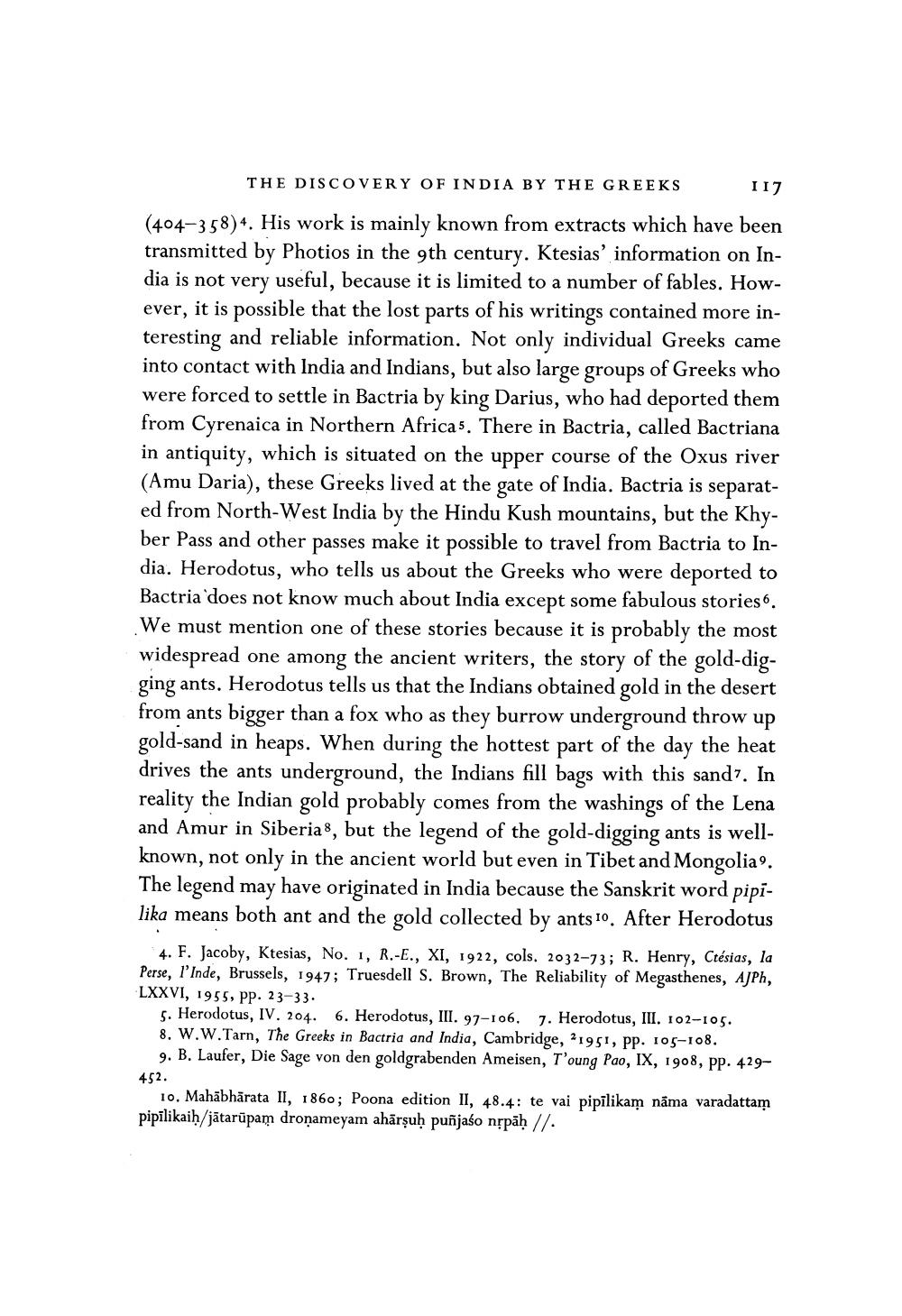________________
THE DISCOVERY OF INDIA BY THE GREEKS 117 (404–358)4. His work is mainly known from extracts which have been transmitted by Photios in the 9th century. Ktesias' information on India is not very useful, because it is limited to a number of fables. However, it is possible that the lost parts of his writings contained more interesting and reliable information. Not only individual Greeks came into contact with India and Indians, but also large groups of Greeks who were forced to settle in Bactria by king Darius, who had deported them from Cyrenaica in Northern Africa. There in Bactria, called Bactriana in antiquity, which is situated on the upper course of the Oxus river (Amu Daria), these Greeks lived at the gate of India. Bactria is separated from North-West India by the Hindu Kush mountains, but the Khyber Pass and other passes make it possible to travel from Bactria to India. Herodotus, who tells us about the Greeks who were deported to Bactria does not know much about India except some fabulous stories6. We must mention one of these stories because it is probably the most widespread one among the ancient writers, the story of the gold-digging ants. Herodotus tells us that the Indians obtained gold in the desert from ants bigger than a fox who as they burrow underground throw up gold-sand in heaps. When during the hottest part of the day the heat drives the ants underground, the Indians fill bags with this sand?. In reality the Indian gold probably comes from the washings of the Lena and Amur in Siberia 8, but the legend of the gold-digging ants is wellknown, not only in the ancient world but even in Tibet and Mongolia'. The legend may have originated in India because the Sanskrit word pipilika means both ant and the gold collected by ants 10. After Herodotus
4. F. Jacoby, Ktesias, No. 1, R.-E., XI, 1922, cols. 2032-73; R. Henry, Ctésias, la Perse, l'Inde, Brussels, 1947; Truesdell S. Brown, The Reliability of Megasthenes, AJPh, LXXVI, 1955, pp. 23-33.
5. Herodotus, IV. 204. 6. Herodotus, III. 97–106. 7. Herodotus, III. 102-105. 8. W.W.Tarn, The Greeks in Bactria and India, Cambridge, 21951, pp. 105-108.
9. B. Laufer, Die Sage von den goldgrabenden Ameisen, T'oung Pao, IX, 1908, pp. 429452.
10. Mahābhārata II, 1860; Poona edition II, 48.4: te vai pipīlikam nāma varadattam pipilikaih/jātarūpam dronameyam ahārşuh puñjaśo nrpā//.




